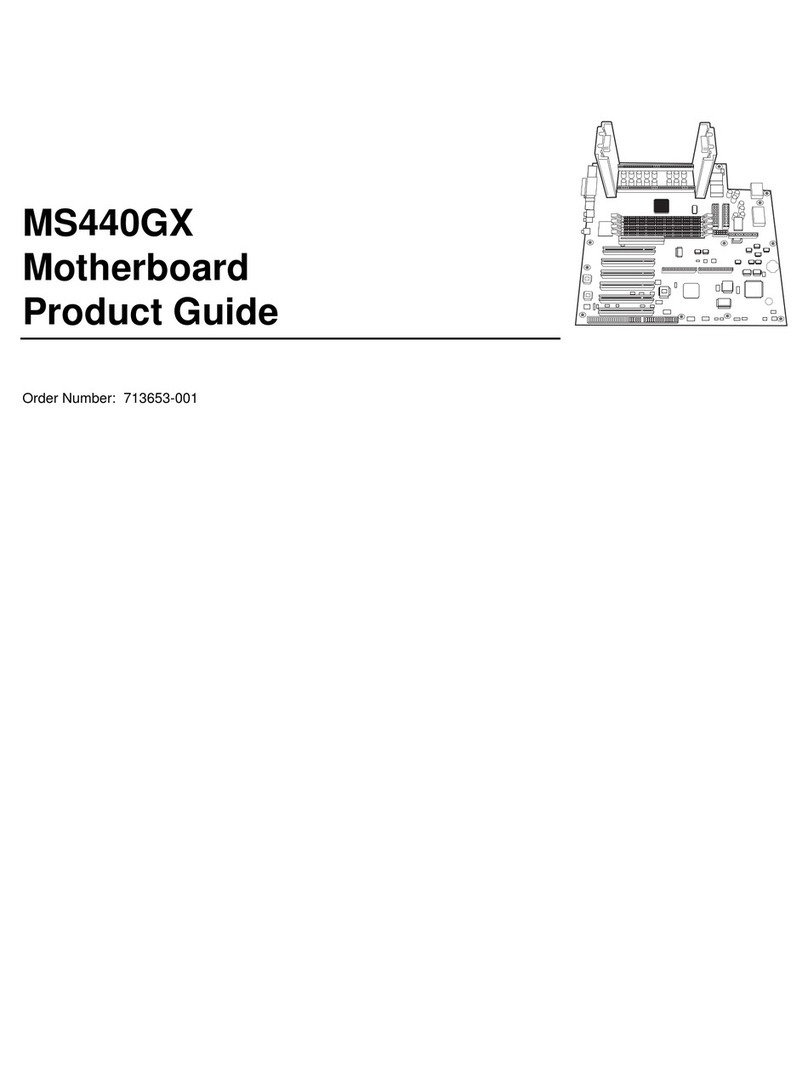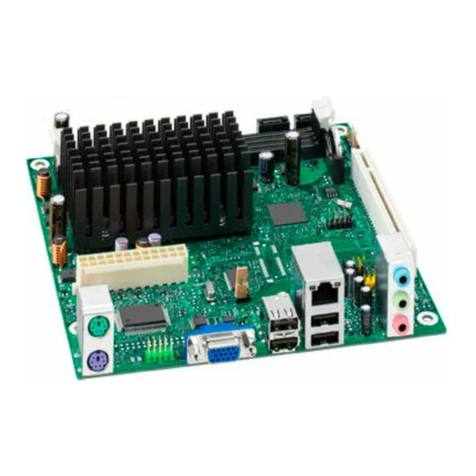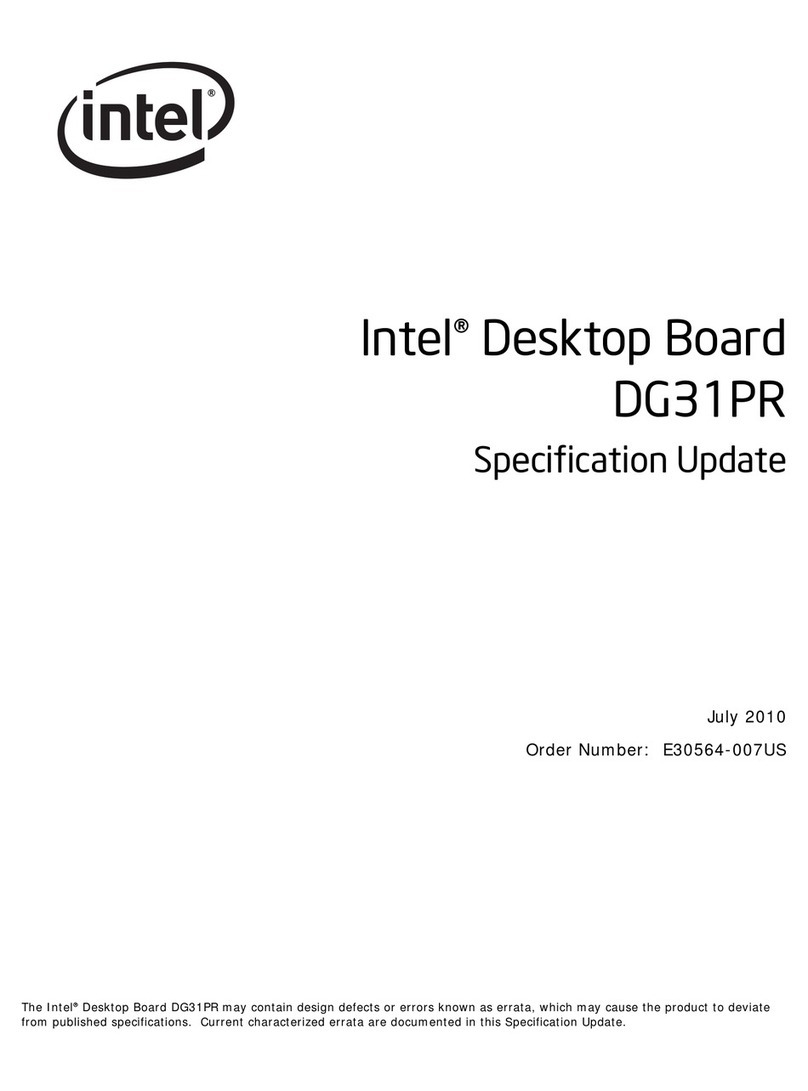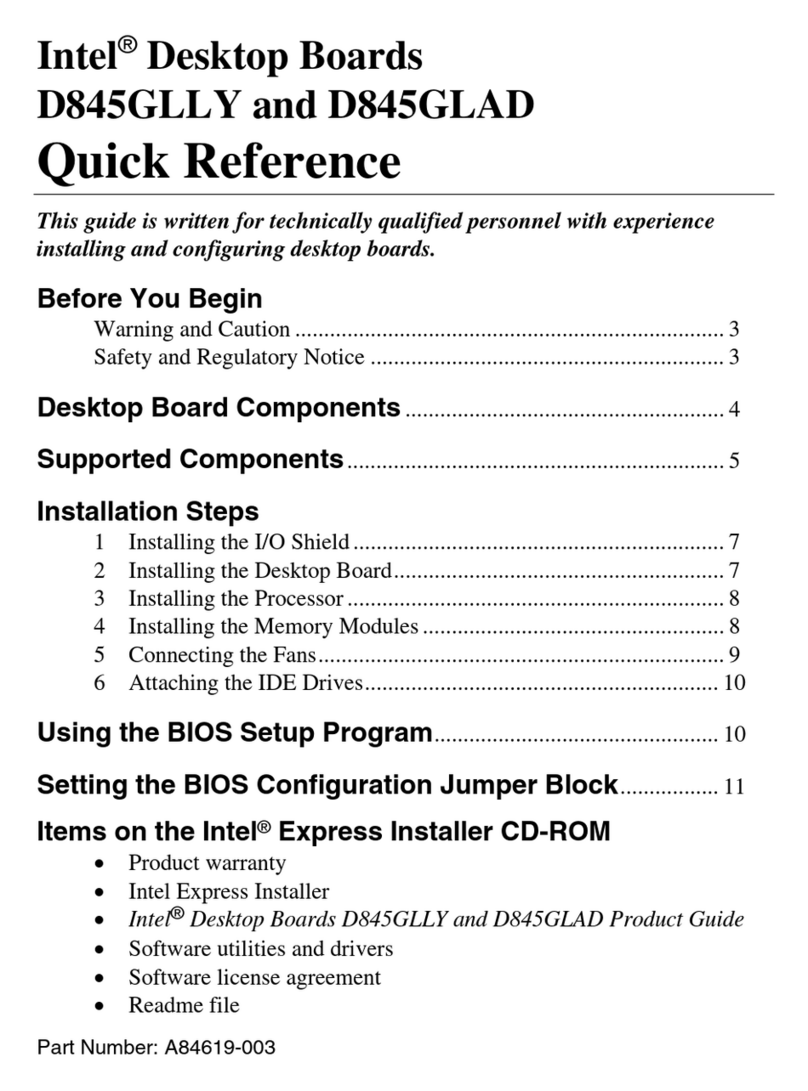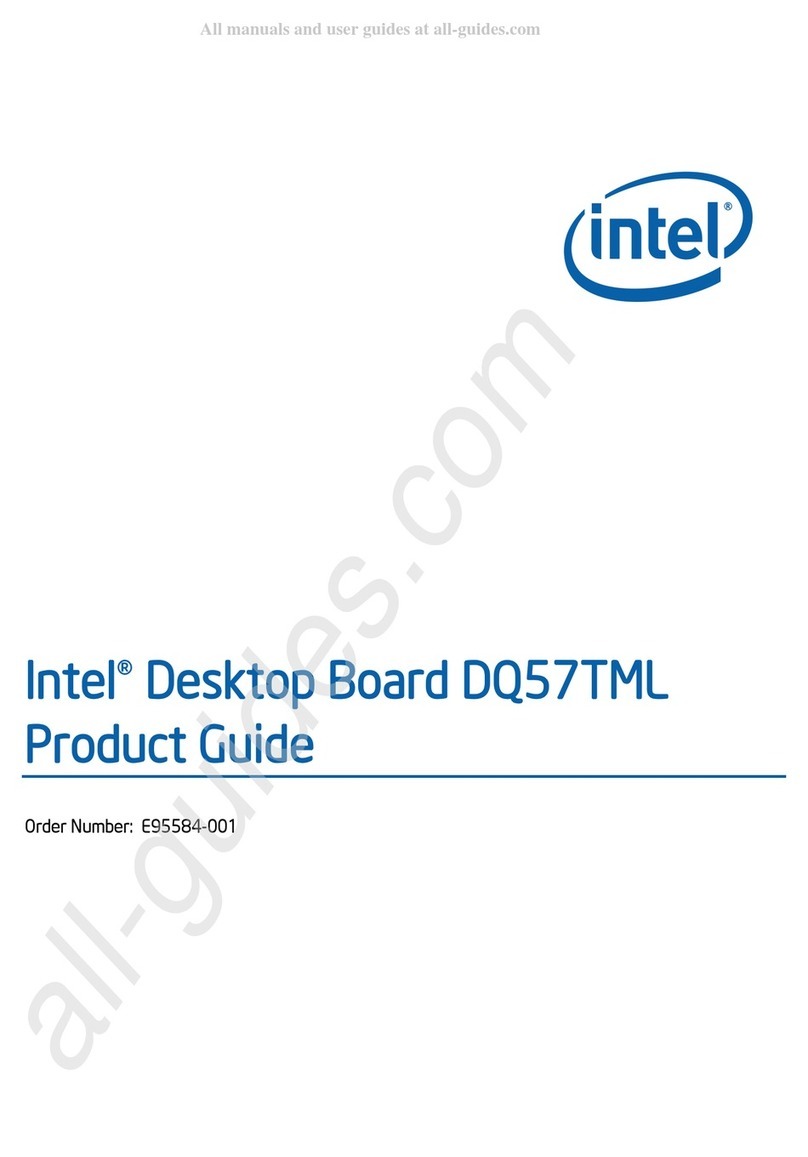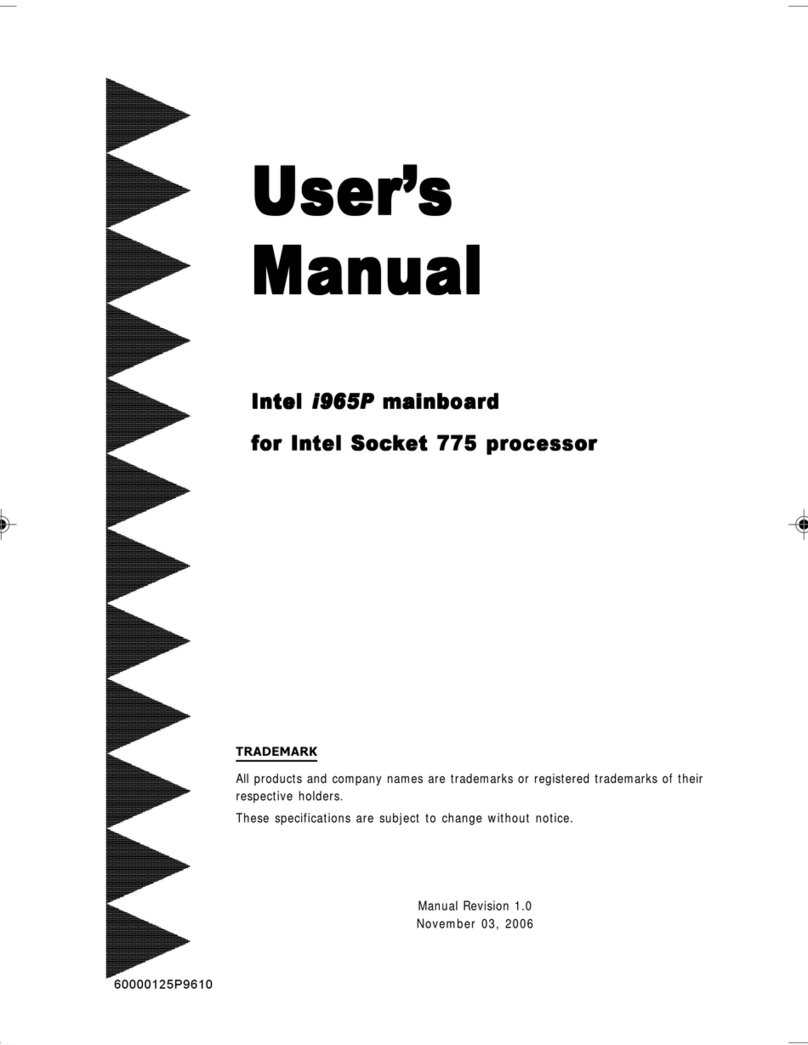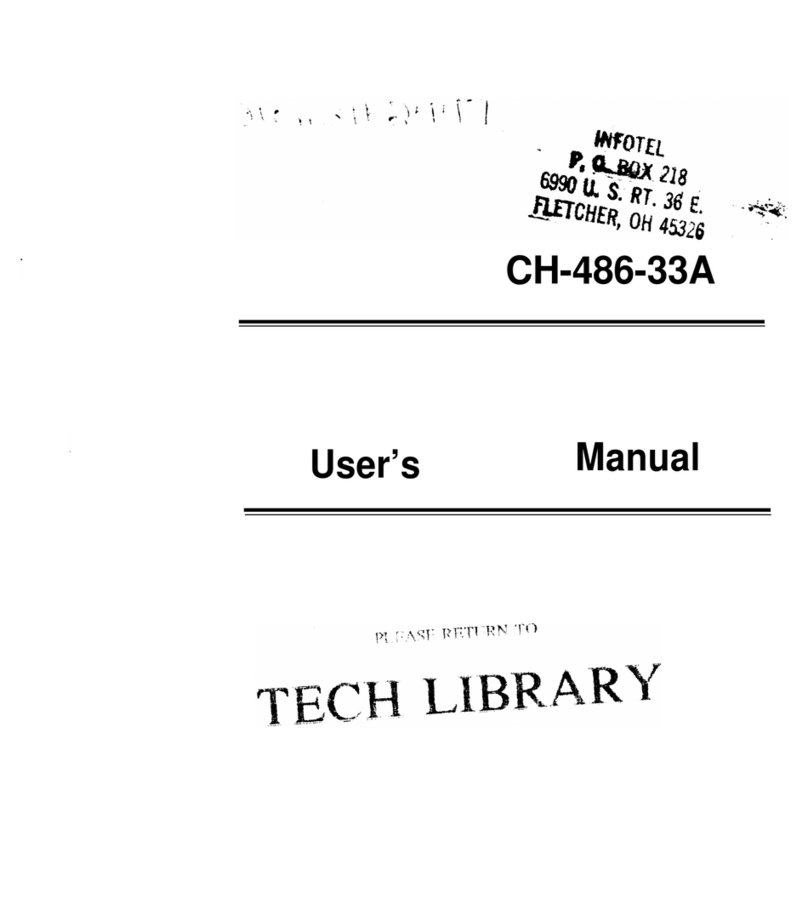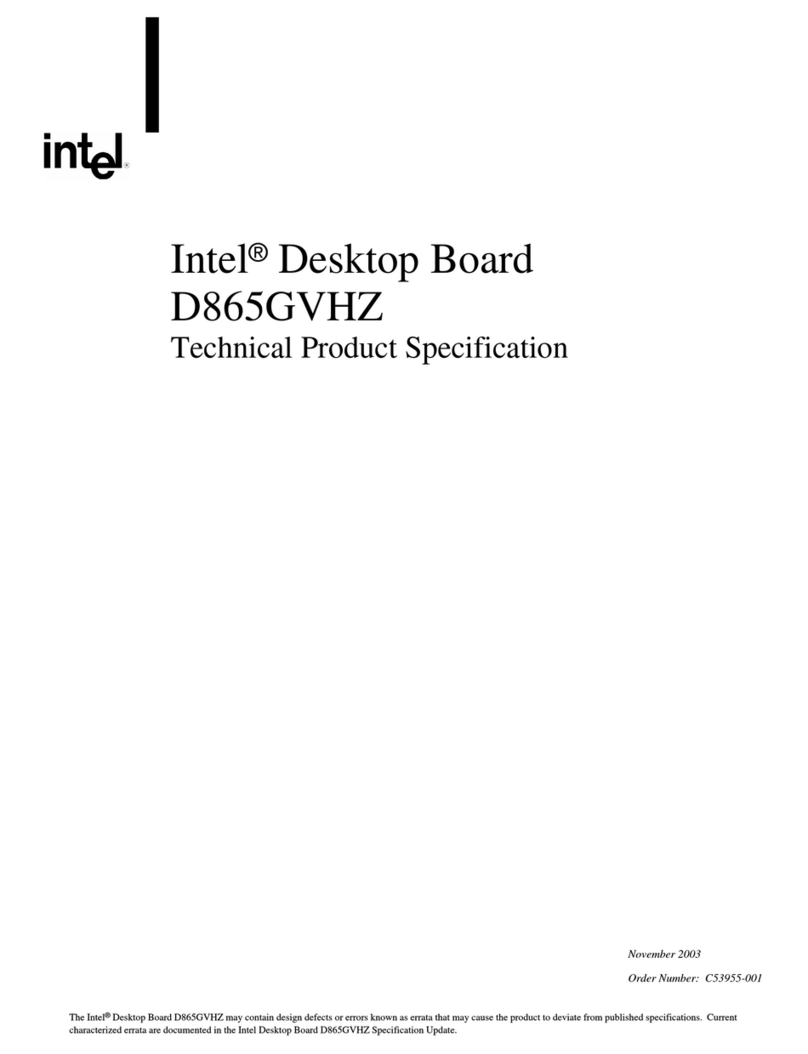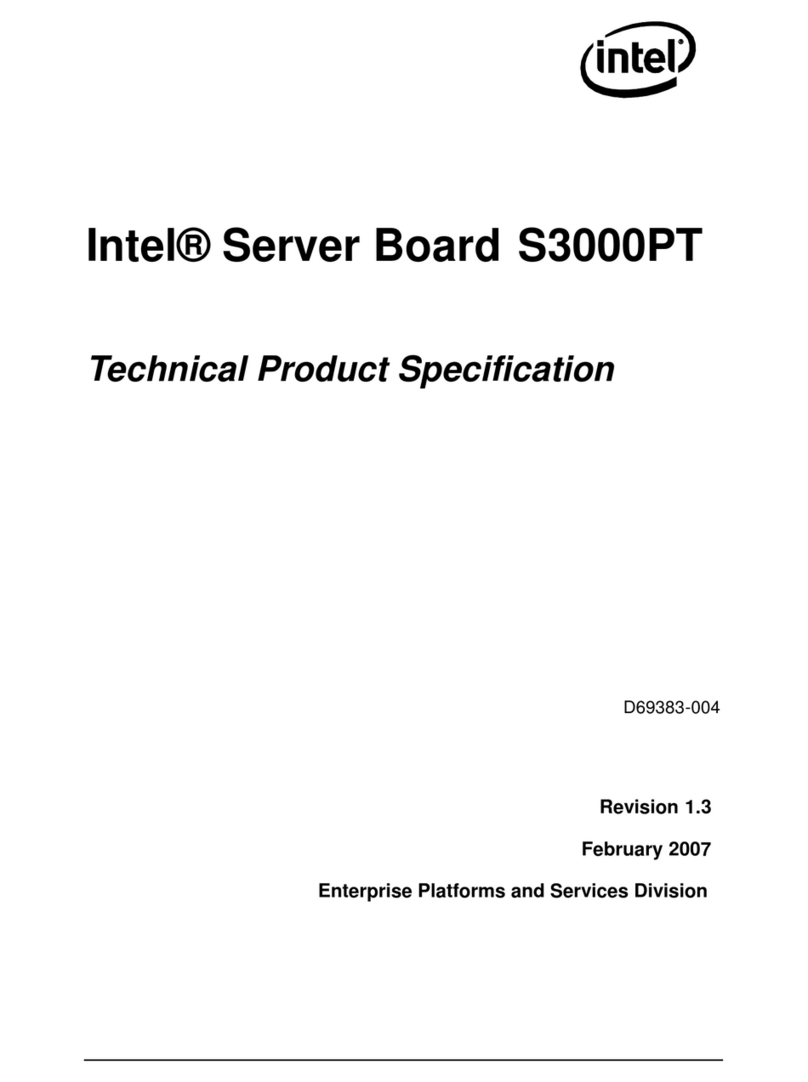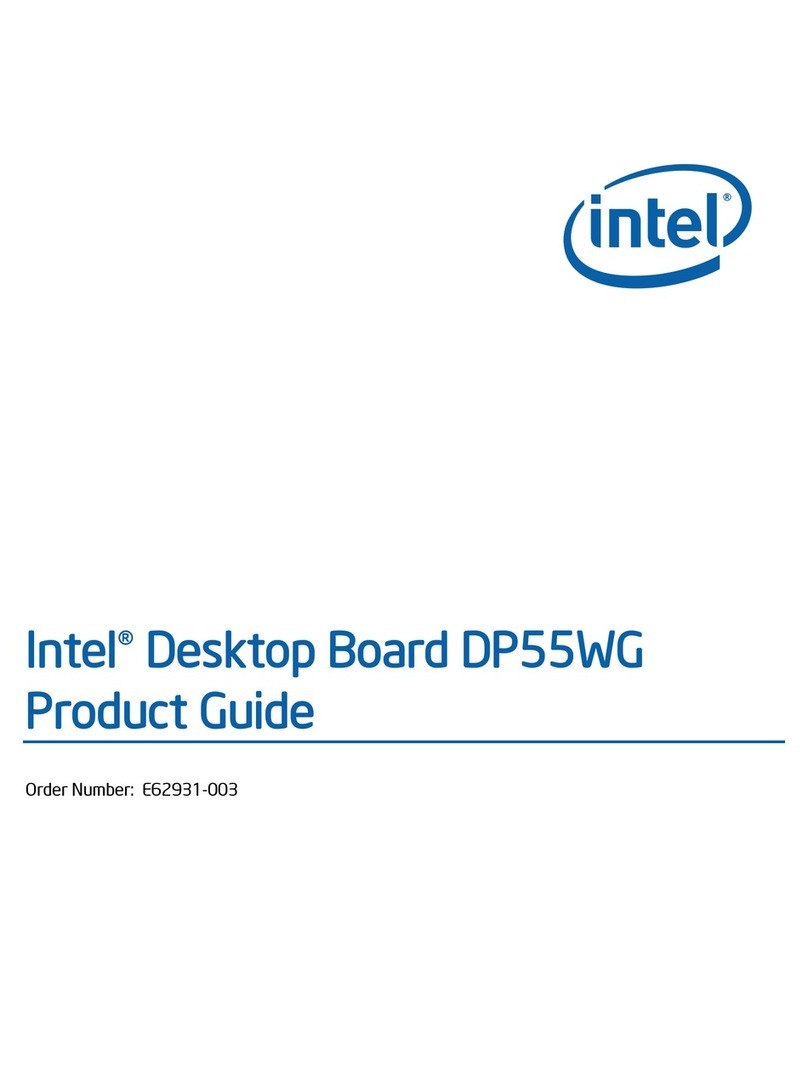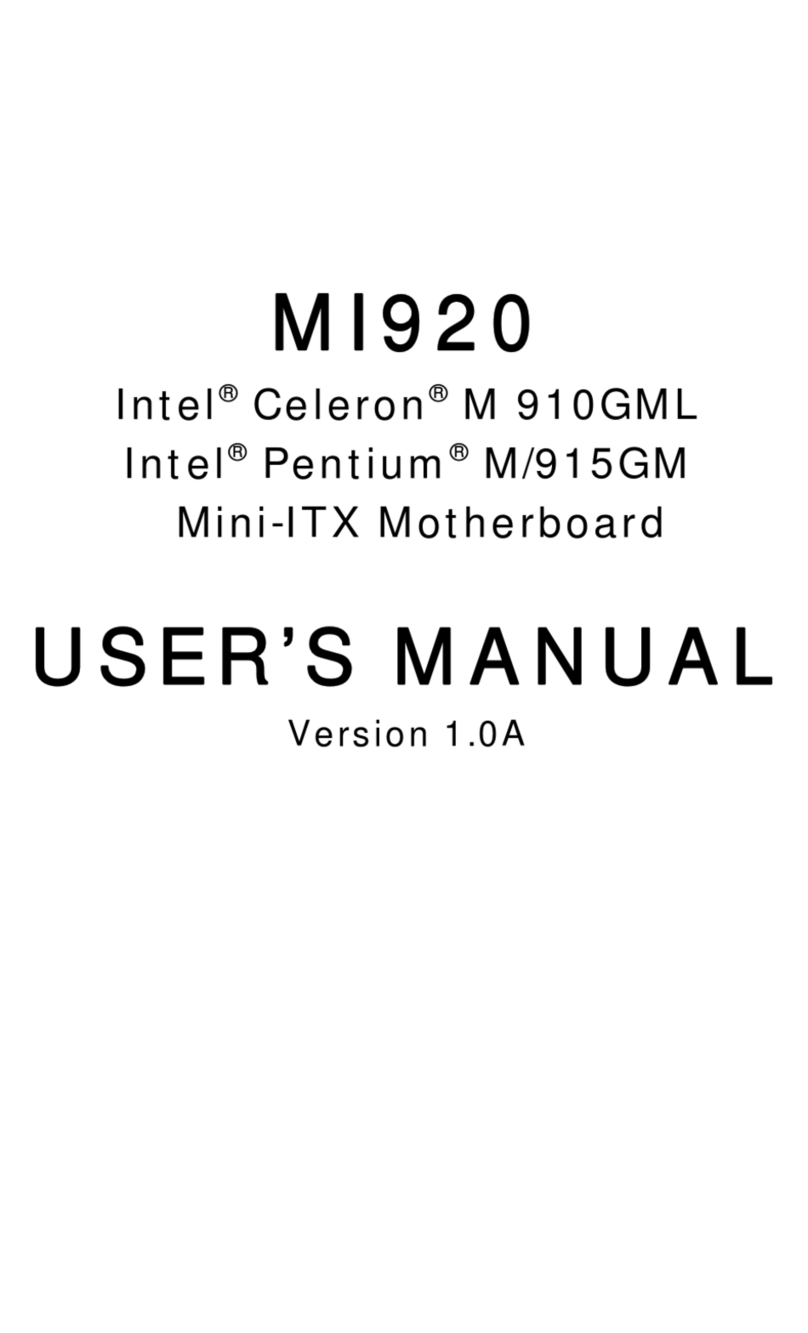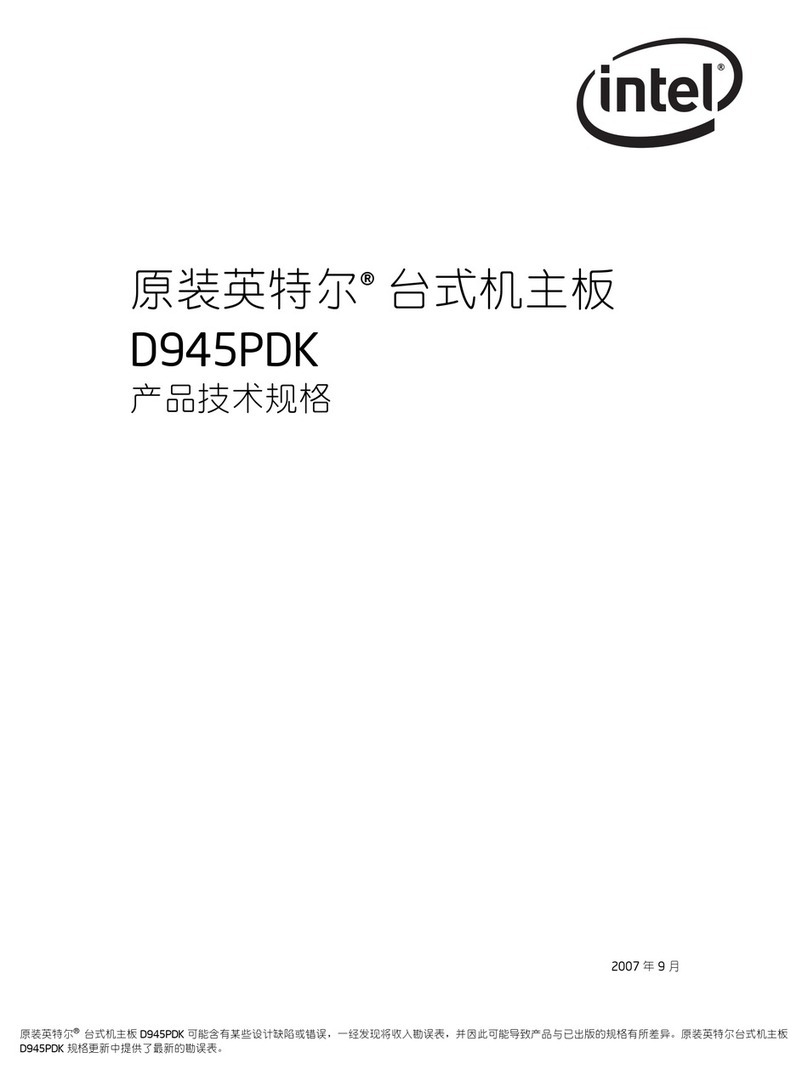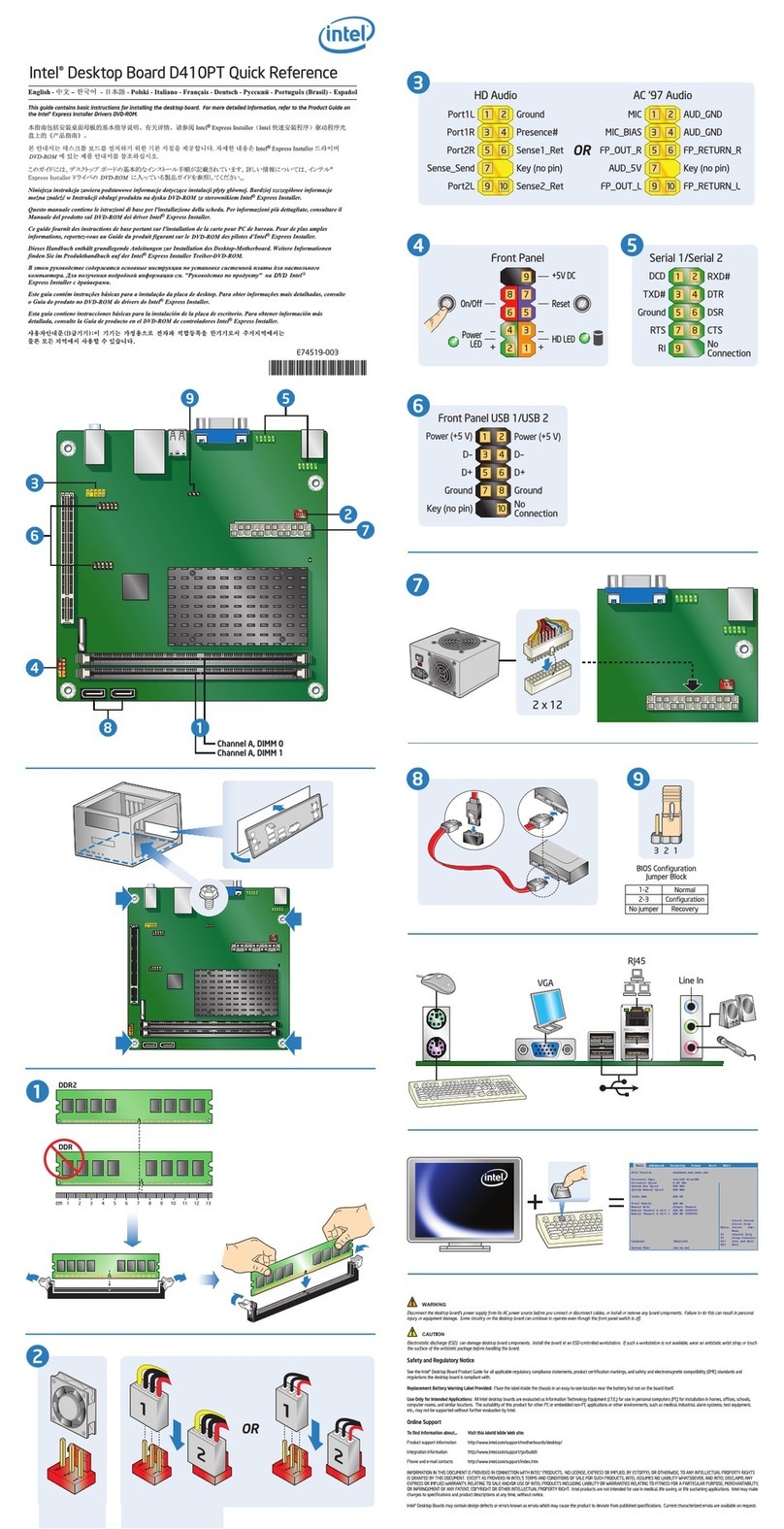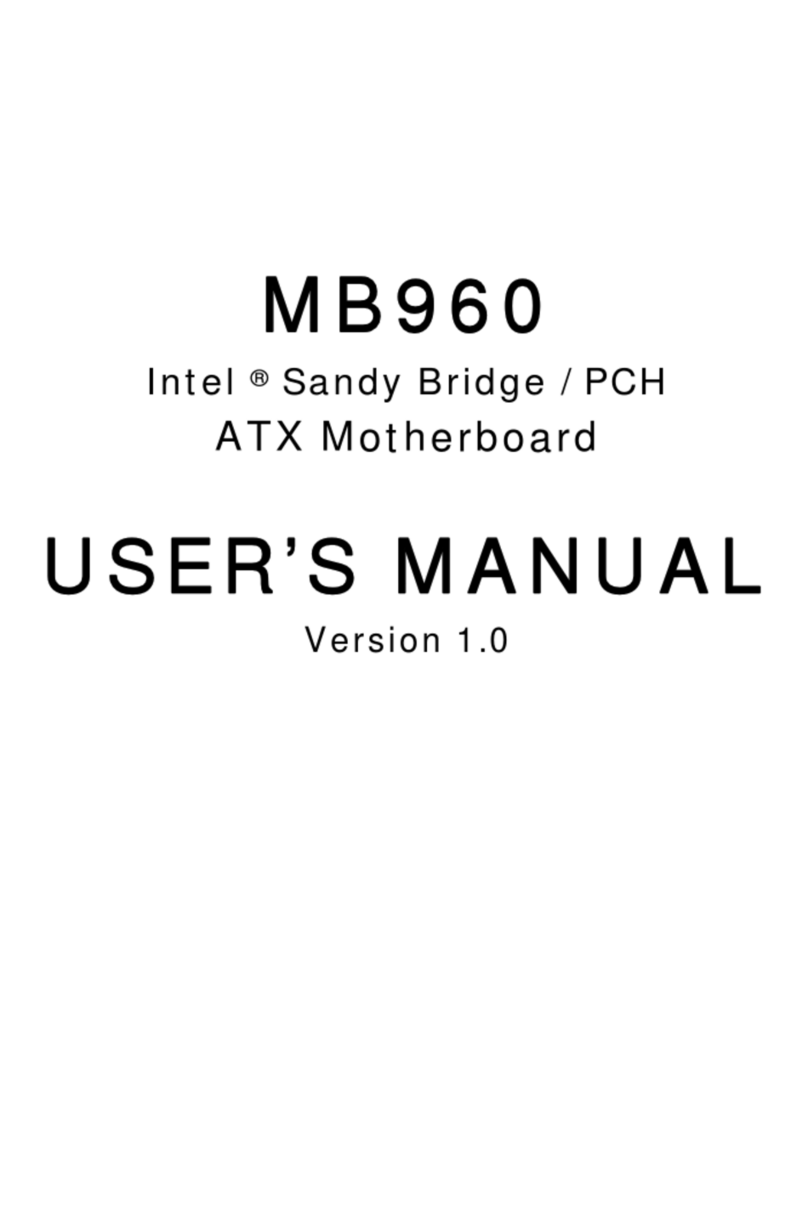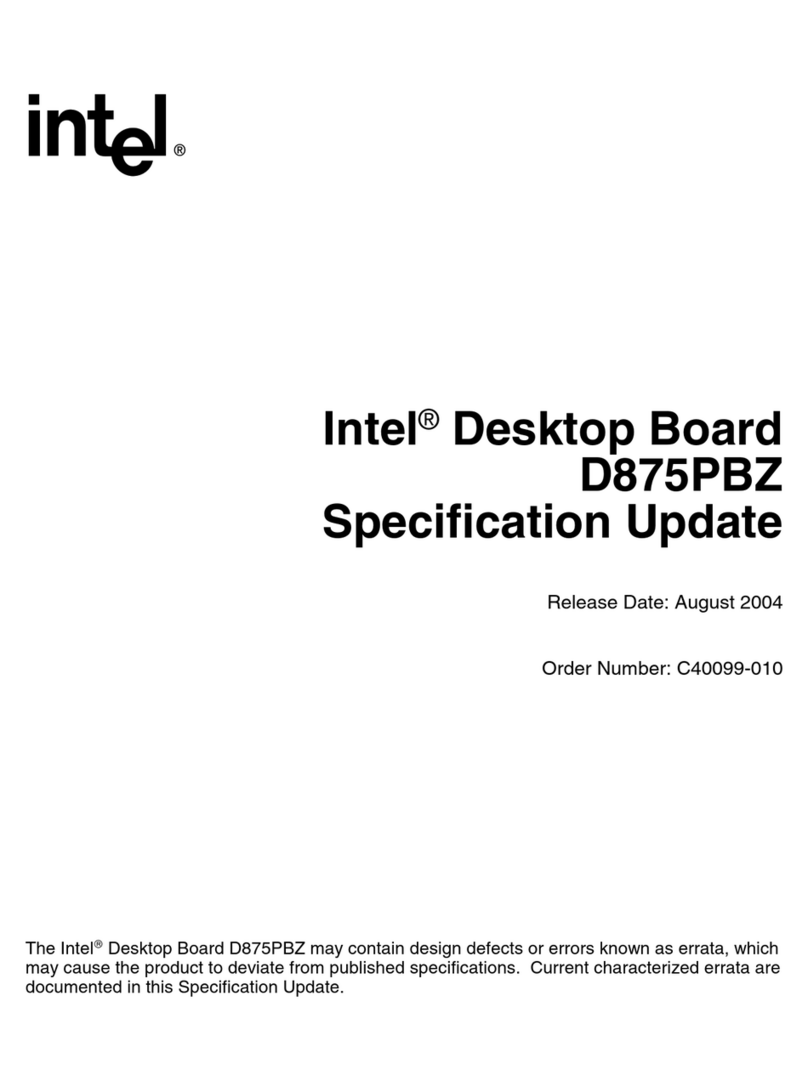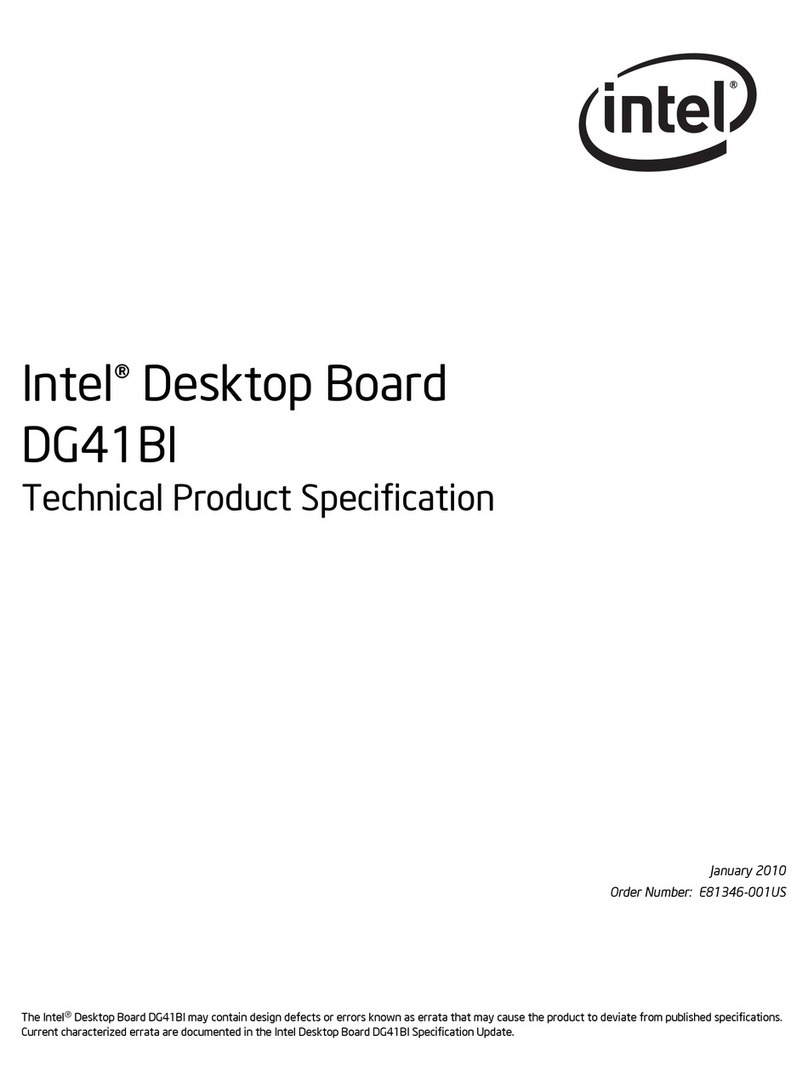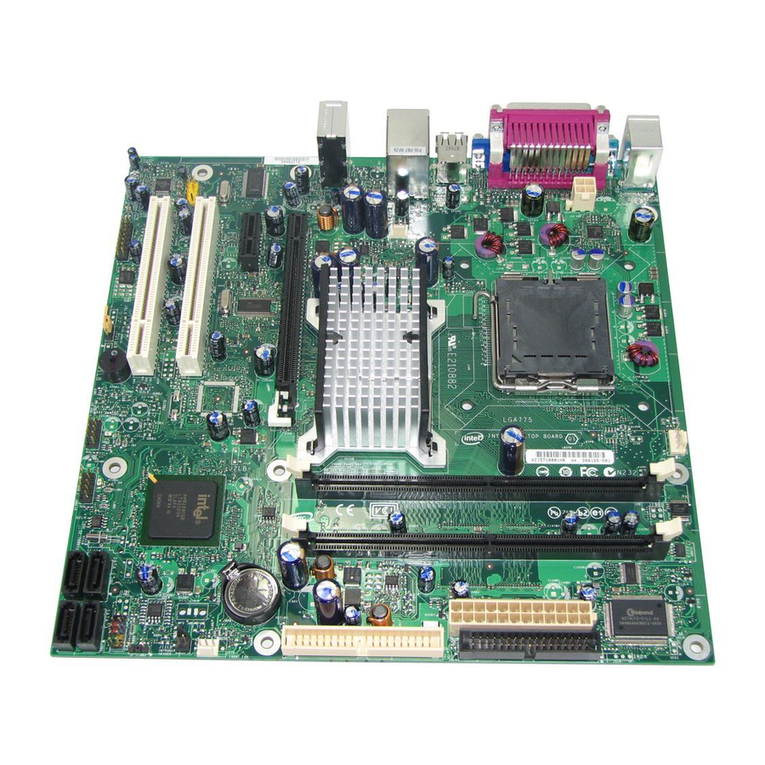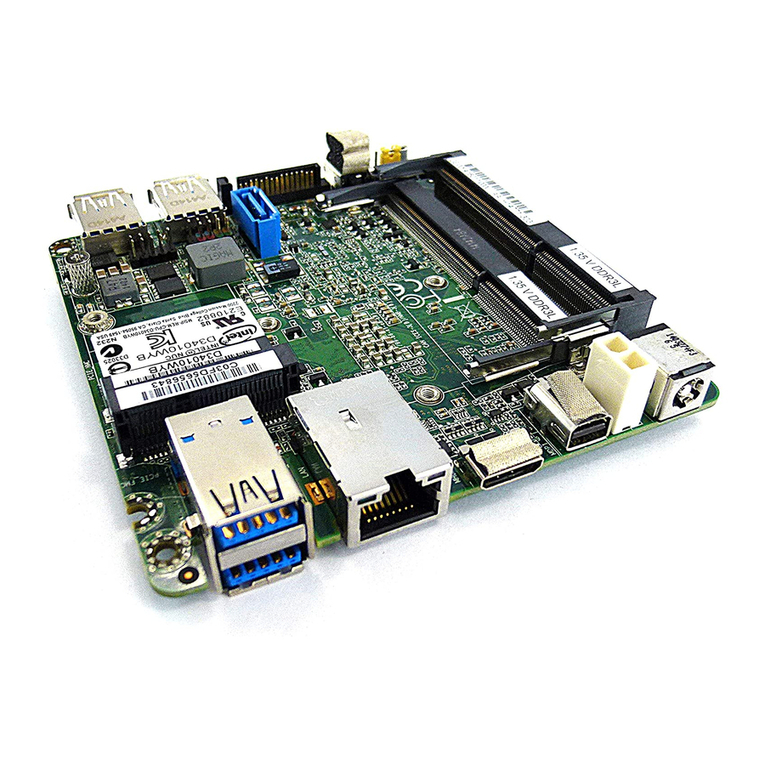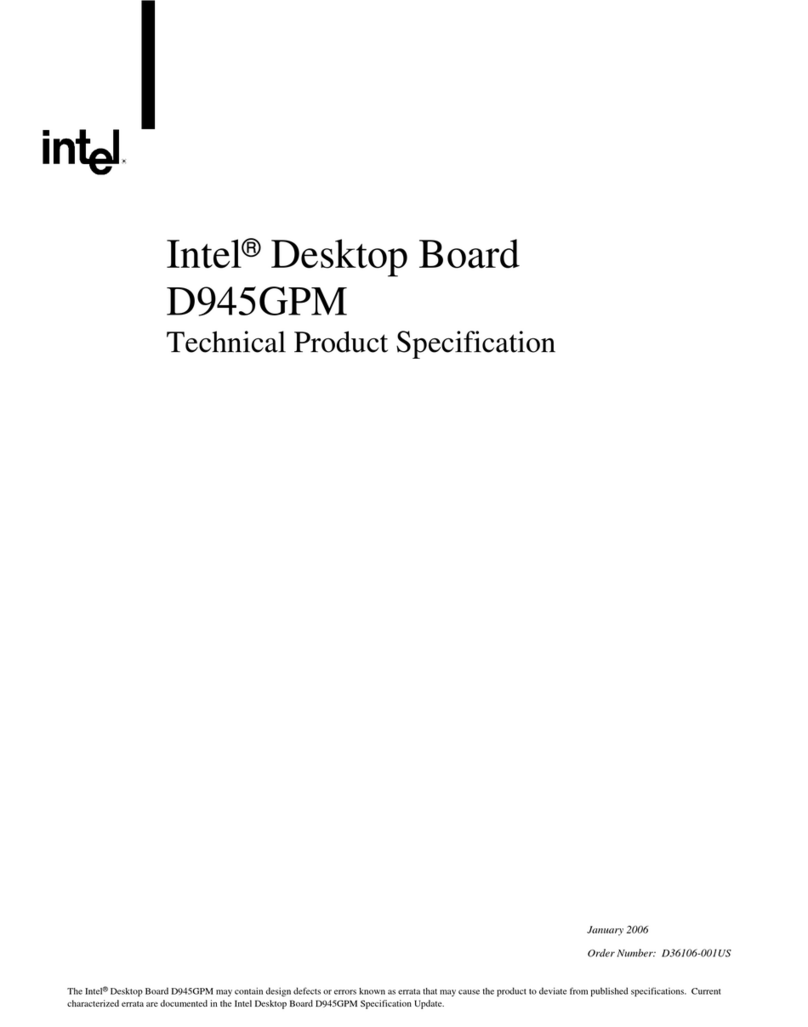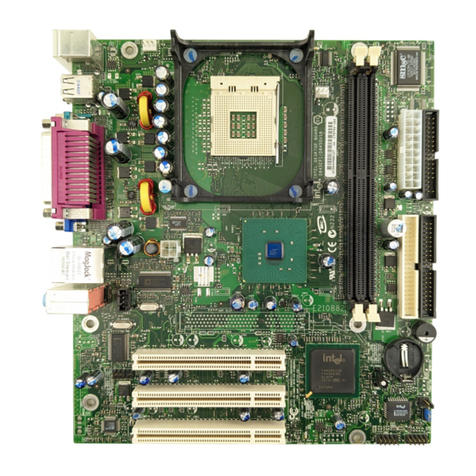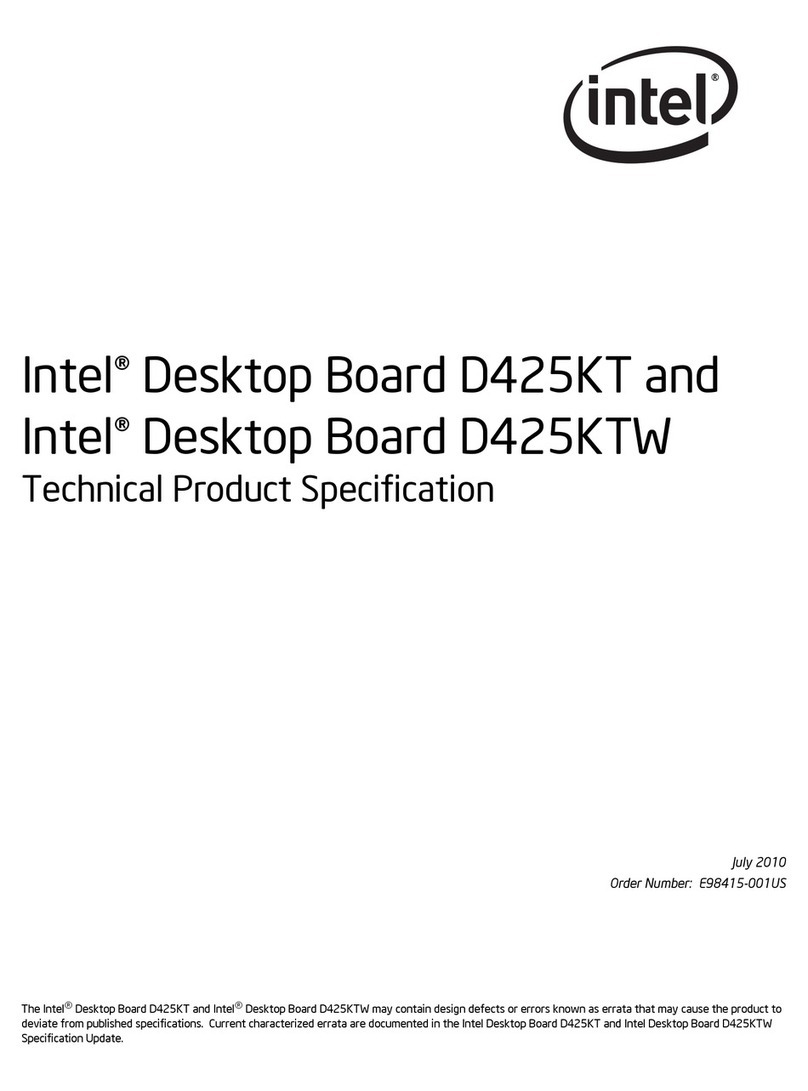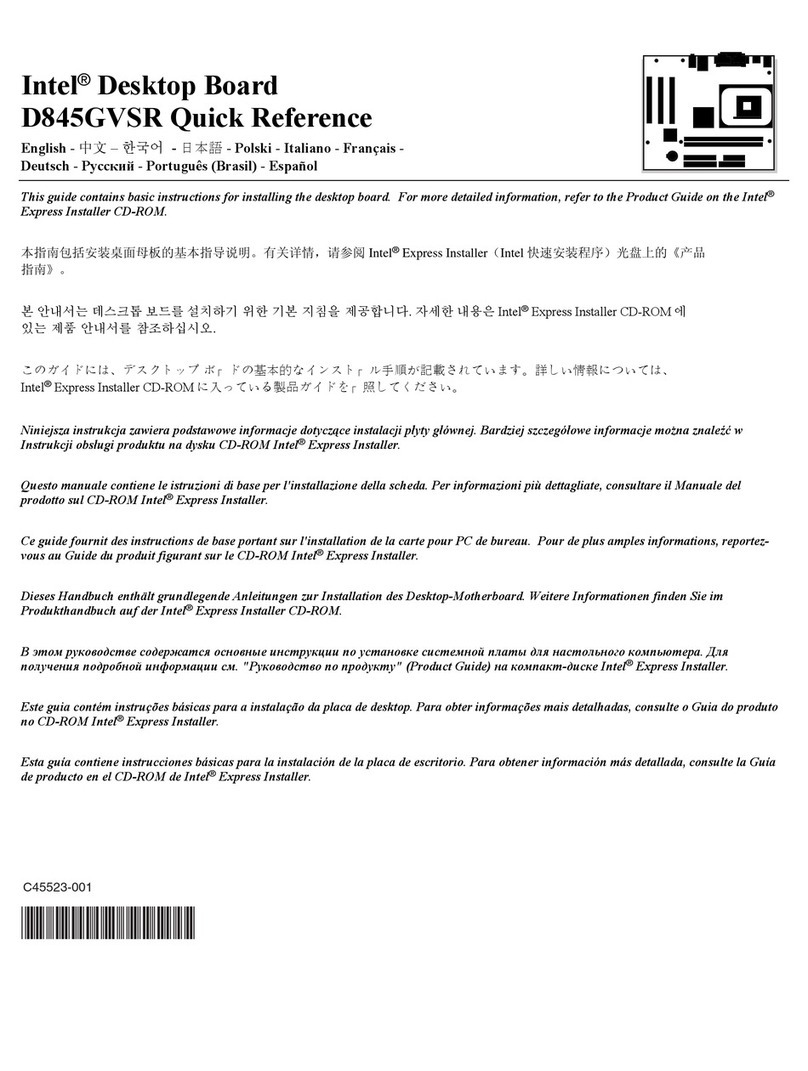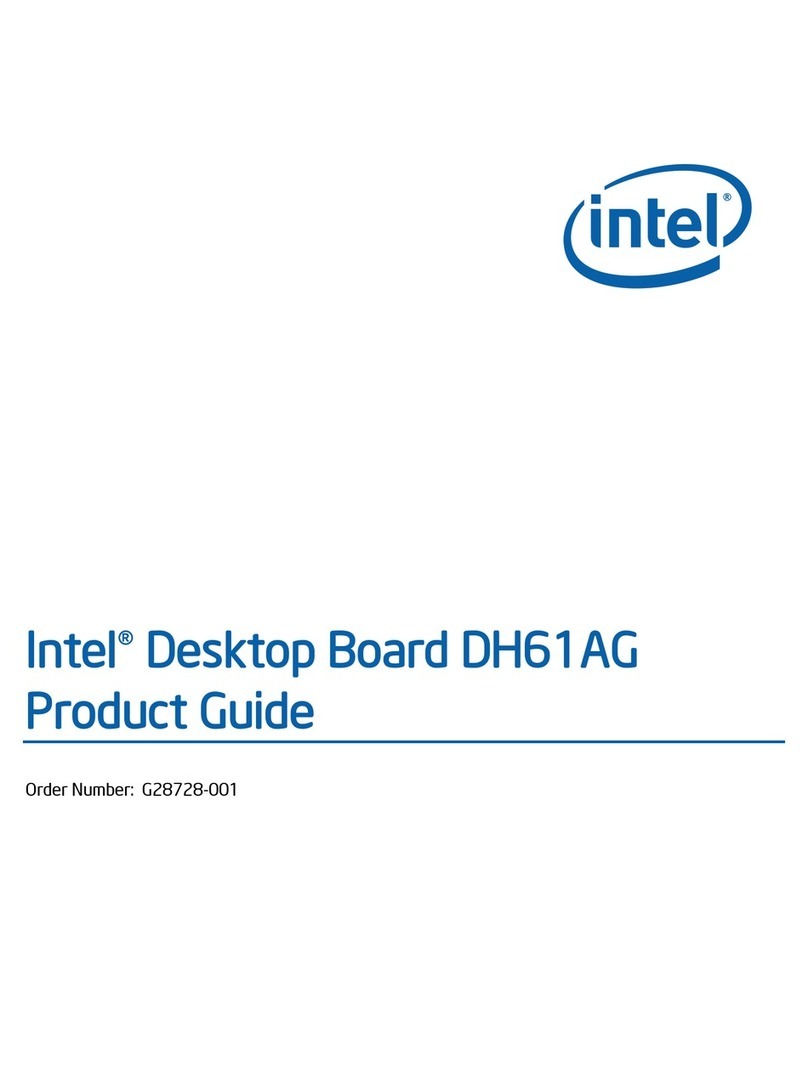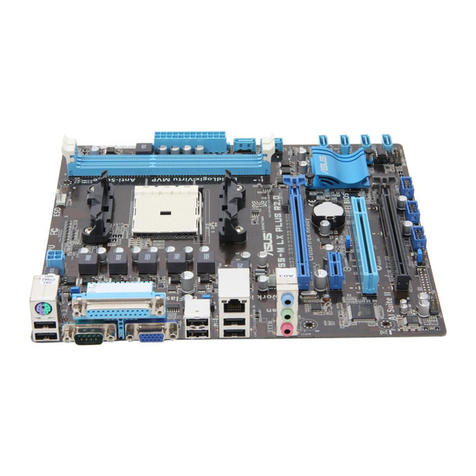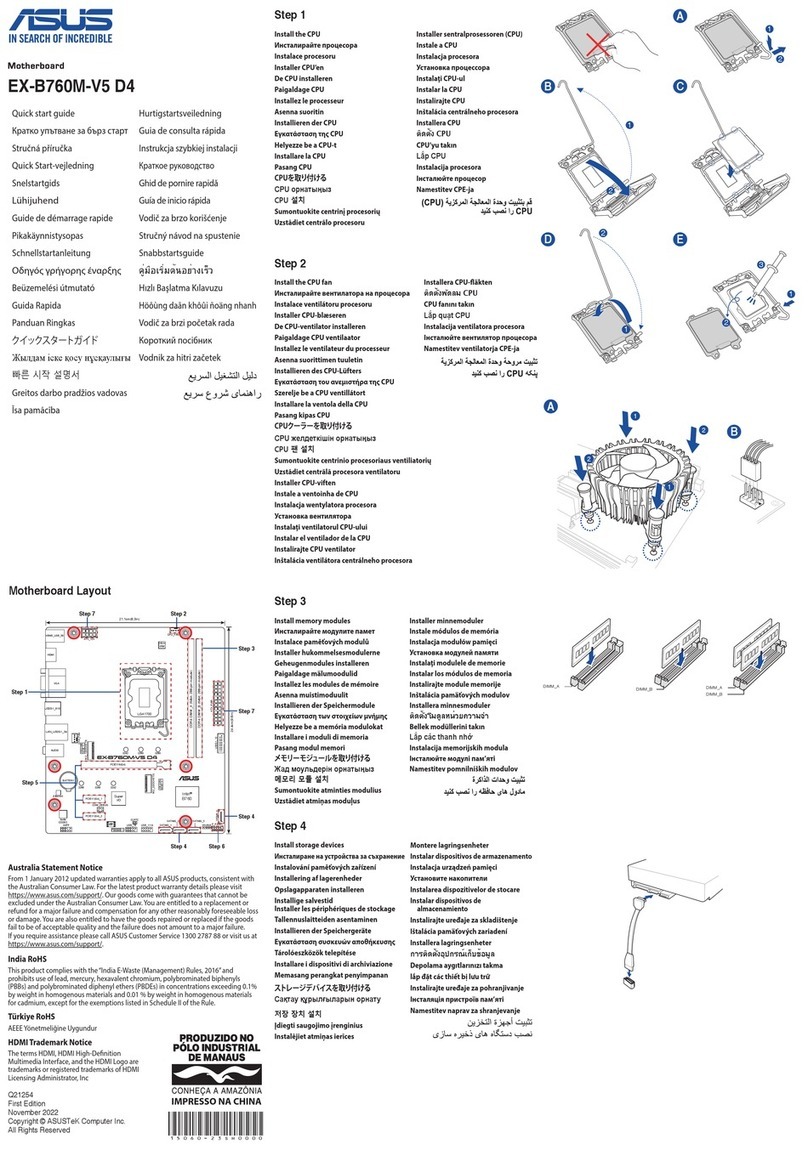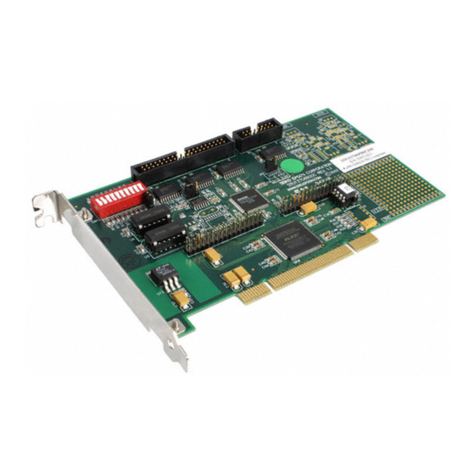
Contents
ix
Figures
1. Major Board Components.................................................................. 13
2. Block Diagram ................................................................................ 15
3. Memory Channel and DIMM Configuration
........................................... 20
4. Back Panel Audio Connectors ............................................................ 26
5. LAN Connector LED Locations
............................................................ 28
6. Thermal Sensors and Fan Headers ..................................................... 30
7. Location of the Standby Power Indicator LED
....................................... 37
8. Detailed System Memory Address Map ............................................... 40
9. Back Panel Connectors ..................................................................... 43
10. Component-side Connectors and Headers ........................................... 44
11. Connection Diagram for Front Panel Header ........................................ 50
12. Connection Diagram for Front Panel USB Headers ................................ 52
13. Connection Diagram for IEEE 1394a Header ........................................ 53
14. Location of the BIOS Configuration Jumper Block ................................. 54
15. Board Dimensions
........................................................................... 55
16. Localized High Temperature Zones..................................................... 58
Tables
1. Specification Changes or Clarifications ..................................................iii
2. Feature Summary............................................................................ 11
3. Board Components Shown in Figure 1 ................................................ 14
4. Supported Memory Configurations ..................................................... 18
5. Audio Jack Retasking Support ........................................................... 25
6. LAN Connector LED States
................................................................ 28
7. Effects of Pressing the Power Switch .................................................. 31
8. Power States and Targeted System Power........................................... 32
9. Wake-up Devices and Events ............................................................ 33
10. System Memory Map ....................................................................... 41
11. Component-side Connectors and Headers Shown in Figure 10................ 45
12. Front Panel Audio Header for HD Audio............................................... 46
13. Front Panel Audio Header for AC ’97 Audio .......................................... 46
14. Serial ATA Connectors
...................................................................... 46
15. Serial Port Header ........................................................................... 46
16. PATA Connector (44-Pin) .................................................................. 47
17. S/PDIF Header
................................................................................ 47
18. Chassis Intrusion Header
.................................................................. 48
19. Processor (4-Pin) Fan Header
............................................................ 48
20. Front, Rear, and Auxiliary Chassis Fan Headers.................................... 48
21. Processor Core Power Connector........................................................ 49
22. Main Power Connector...................................................................... 49
23. Front Panel Header
.......................................................................... 50
24. States for a One-Color Power LED...................................................... 51
25. States for a Two-Color Power LED...................................................... 51
26. Alternate Front Panel Power LED Header
............................................. 52
27. BIOS Setup Configuration Jumper Settings.......................................... 54
